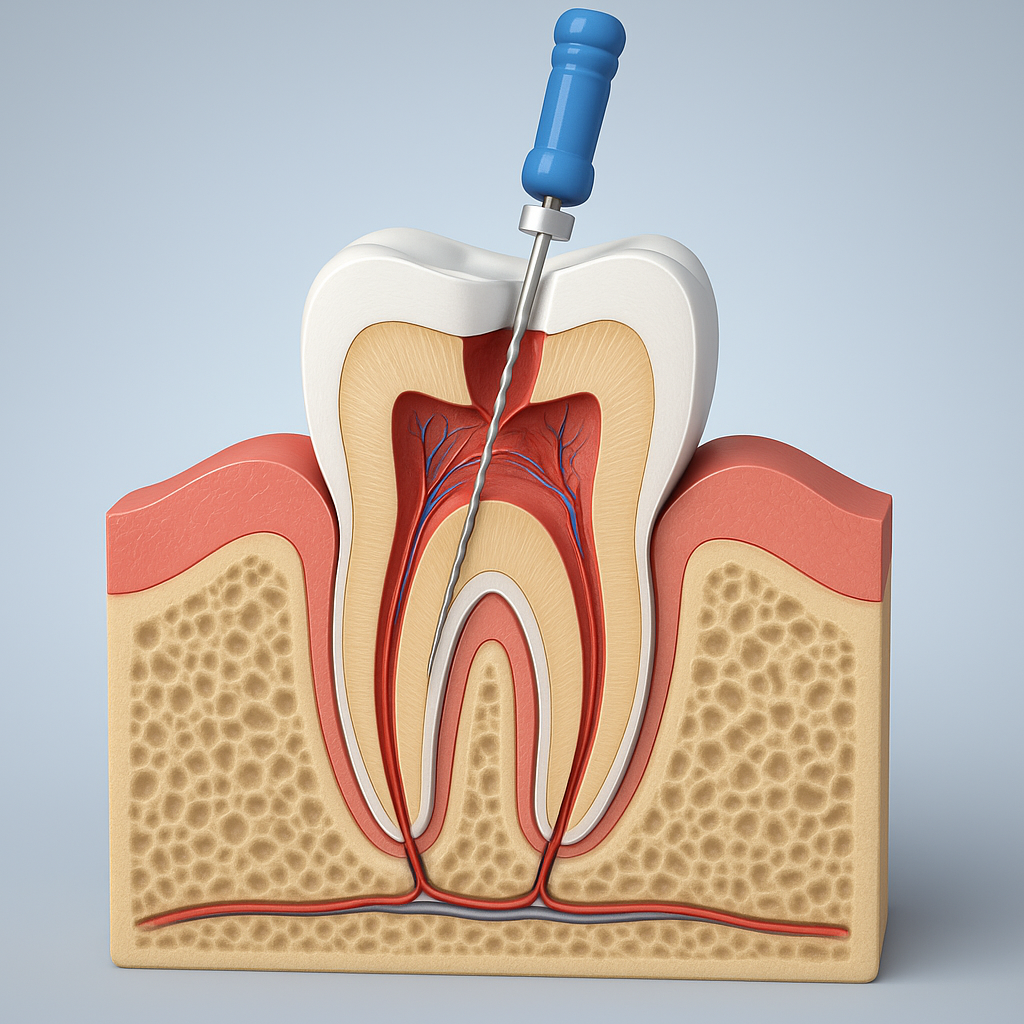Hearing the words “you need a root canal” can feel intimidating. Root canals have earned an undeserved reputation for being painful, when in reality, the procedure is designed to do the opposite—eliminate pain and save your tooth.

Thanks to modern dental technology and anesthesia, today’s root canal treatments are straightforward, highly successful, and often no more uncomfortable than getting a filling. If your dentist has recommended one, here’s everything you should know before your appointment.
To understand why root canals are necessary, it helps to know a little about tooth anatomy.
When the pulp becomes infected or damaged—usually due to deep decay, cracks, trauma, or repeated dental procedures—it can’t heal on its own. Without treatment, bacteria spread, leading to abscesses, bone loss, and eventually, tooth loss.
A root canal removes the infected pulp, disinfects the inside of the tooth, and seals it to prevent reinfection. The tooth structure remains, which allows it to continue functioning normally.
Not every toothache requires a root canal, but there are common warning signs to look out for:
👉 If you notice these symptoms, schedule an exam right away. A dentist will take X-rays and perform a clinical evaluation to confirm whether a root canal is the best treatment option.
Your dentist begins with X-rays to identify the extent of the infection and plan the treatment.
Local anesthesia is administered to numb the tooth and surrounding area. For anxious patients, options such as nitrous oxide (“laughing gas”) or oral sedation provide added comfort.
A small opening is made in the crown of the tooth to access the pulp chamber.
The infected or inflamed pulp is carefully removed. Specialized instruments are used to clean, shape, and disinfect the canals inside the root.
The canals are sealed with a biocompatible material (usually gutta-percha) to prevent reinfection.
Most root canal–treated teeth require a crown afterward to protect against fracture. This final step restores strength, function, and appearance.
The biggest myth about root canals is that they’re painful. In reality:
In fact, studies show patients often report that a root canal is no more painful than getting a routine filling .
Most patients return to their normal activities the very next day. Here’s what to expect:
With proper care, your root canal tooth can last a lifetime.
Delaying or refusing treatment allows infection to spread deeper into the jaw and beyond. Risks include:

Root canal therapy is one of the most reliable dental procedures.
1. How long does a root canal take?
Most root canals can be completed in one to two visits, depending on the complexity of the tooth and the severity of the infection.
2. Will I need a crown afterward?
In most cases, yes. Crowns protect weakened teeth from fracture and restore function.
3. Can a root canal fail?
Although rare, reinfection can occur. Retreatments or apical surgery are possible solutions, and success rates remain high.
4. Is extraction a better option?
Saving your natural tooth is almost always the best choice. Extraction can lead to shifting teeth, bone loss, and the need for replacements that cost more and require more care.
5. How much does a root canal cost?
Cost varies depending on the tooth and your insurance, but root canal therapy is generally more affordable than replacing a lost tooth with an implant or bridge.
| Question | Answer |
|---|---|
| Painful? | No – modern root canals are virtually painless. |
| Recovery time | Most patients return to normal activity within 24 hours. |
| Longevity | Treated teeth can last a lifetime with crowns and good oral care. |
| Success rate | 85–97% success rate according to AAE. |
| Alternative | Extraction – but leads to higher costs and complications long term. |
A root canal is nothing to fear—it’s a safe, effective way to stop pain, eliminate infection, and save your natural tooth. With today’s techniques and anesthesia, the procedure is comfortable, the recovery is quick, and the long-term benefits are significant.
At Designing Smiles, Dr. Deborah Fung and her team are committed to making your root canal appointment stress-free and successful. If you’ve been told you need one, don’t delay—schedule your visit today and protect your smile for years to come.
